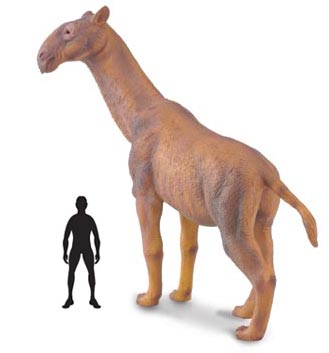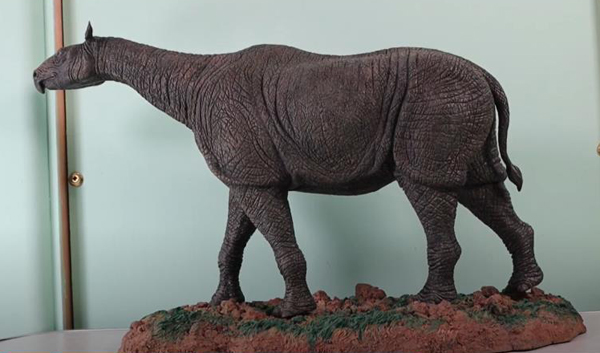The Gigantic Paraceratherium – An Extinct Rhinoceros
Whatever the correct name for these huge, prehistoric mammals, Paraceratherium, Indricotherium or indeed Baluchitherium it was with great delight that we received our first batch of models of this ancient Perissodactyl (odd-toed, hoofed mammal). A relative of extant rhinos, although without a horn, Paraceratherium (the accepted scientific name for this genus), is regarded by many scientists as the largest land mammal ever. Only the very largest species of elephant from the fossil record can match a male Paraceratherium when it comes to size and weight. Some estimates have these huge, herbivores tipping the scales at an incredible 20 Tonnes, making them comparable in weight to many sauropods, the titans of the Dinosauria. The females are believed to have been smaller, although at an estimated 11 tonnes for a mature cow, you would not want one standing on your toes as that still equates to twice the weight of an adult African elephant.
Paraceratherium, Indricotherium or Baluchitherium?
A number of species of Indricothere are known from the fossil record of Europe and Asia, most famously from the Hsanda Gol Formation (Oligocene). Their long legs and necks enabled them to browse on the tallest trees, like modern giraffes. It is such a pleasure to have a model to add to our prehistoric mammal model range. Normally, it is the Woolly Mammoths and Smilodons that get all the attention, but it is so nice to see a model maker and manufacturer (Procon and the CollectA range), introducing a model of one of the more unusual and less known prehistoric mammals.
The Model of Paraceratherium (CollectA Paraceratherium Model)

Picture credit: Everything Dinosaur
The picture shows the new, hand-painted model of Paraceratherium. We have added the human model to show scale of the creature in real life. Adult Paraceratherium could peer over the roof of a house.
To view models of prehistoric mammals and dinosaurs: CollectA Deluxe Prehistoric Life Models.
Although, this animal featured in the popular sequel to “Walking with Dinosaurs”, the “Walking with Beasts” television series from the BBC, our fascination with this particular animal goes back a long way.
Whilst waiting for the models to arrive and checking on the fact sheet that our experts have prepared, a little bit of time was spent looking at old reference books that feature this animal. There is an illustration of rather heavy set Paraceratherium (referred to in the text as Baluchitherium), in the Hamlyn Pointer book entitled “Dinosaurs and Other Prehistoric Animals” written by Alfred Leutscher. The book must be something like forty years old but we would like to quote part of the passage dedicated to Paraceratherium, if nothing else it shows how the views of palaeontologists have changed over the years.
“With its tall neck it [Paraceratherium] could graze in the tree branches and browse off the leaves, rather as the modern giraffe does. Perhaps it died out because it grew too big and clumsy like the dinosaurs did”.
Animals becoming extinct as they simply became too big and clumsy, an interesting theory. The way that some of us bump around the office and warehouse at times, may be a sign that we too are in danger of extinction due to our clumsiness.
Still, so nice to see a model of this animal widely available.

A view of the eagerly anticipated ITOY Studio Paraceratherium model. Is this Paraceratherium, Indricotherium or Baluchitherium? Picture credit: Everything Dinosaur.
Picture credit: Everything Dinosaur
To view the ITOY Studio range of figures: ITOY Studio Prehistoric Animal Figures.






Leave A Comment